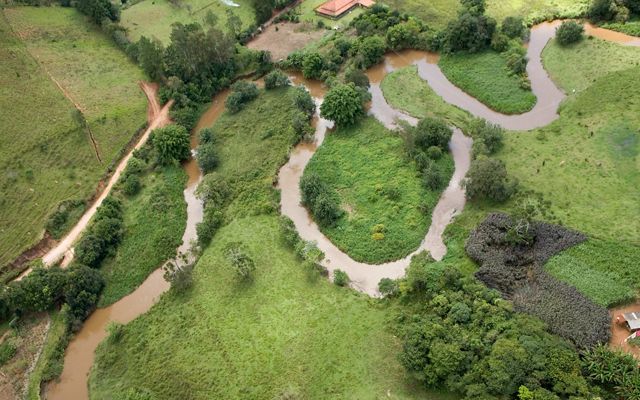Nature: Our Best Prescription for a Healthy World
Threats to nature & public health are intertwined—a collaborative approach is needed to achieve an equitable, sustainable future.
Our global insights, straight to your inbox
Get our latest research, insights and solutions to today’s sustainability challenges.
Sign UpApril 7 is World Health Day, and this year the day feels more salient than usual. The fallout from the COVID-19 pandemic continues to reverberate around the world, shaking the foundations of our economies and societies and deepening our understanding of how dependent we are on nature.
Put simply: when the planet is sick, humans become sick too. Zoonotic diseases (pathogens that pass from animals to humans) like rabies and bubonic plague have challenged us for centuries, but the frequency of outbreaks of serious zoonotic diseases like SARS, Ebola and COVID-19 has accelerated in recent decades.
In recognition of this fact, the World Health Organization (WHO) launched its WHO Manifesto last year, calling for decisive action to address the root causes of the COVID-19 pandemic by reducing social inequalities and ecosystem degradation and transforming the way we relate to the environment in which we live.
The WHO Manifesto and other emerging research recognize that root causes of this pandemic are common to many of the causes of climate change and biodiversity loss. Confronting these systemic and intertwined threats requires an integrated approach and unprecedented cooperation to achieve an equitable and durable recovery that is both carbon-neutral and nature-positive, ensuring a more sustainable and resilient future.


New Research on Nature and Health
The IPBES #PandemicsReport, released in 2020, provides one of the most scientifically robust examinations to date of the links between pandemic risk and nature. It tells us that:
- The path to pandemics lies in changes to the way we use land, especially the expansion and intensification of agriculture: certain patterns of production and consumption disrupt nature and increase contact between wildlife, livestock, pathogens and people.
- An estimated 1.7 million currently undiscovered viruses are thought to exist in mammal and avian hosts. Of these, it’s estimated that up to 827,000 could have the ability to infect humans. The same human activities that drive climate change and biodiversity loss also drive pandemic risk through their impacts on our environment.
- Pandemic risk can be significantly lowered by reducing human activities that drive the loss of biodiversity (including land-use change), by more effective conservation of protected areas, and by reducing unsustainable exploitation of high-biodiversity regions. This will also reduce wildlife-livestock-human contact and help prevent the spillover of new diseases.
Medicine for People and Planet
We have the ability to reduce the threat of pandemics—but the way we are tackling them right now largely ignores this potential. Rather than proactively addressing their root causes, we rely on attempts to contain and control diseases after they emerge, through measures like vaccines and lockdowns. And while the human suffering and socio-economic costs go way beyond financial, it’s also worth noting that some experts estimate that the cost of reducing risks of future pandemics to be around 100 times less than the cost of responding to such pandemics.
The “One Health Approach” espoused by WHO and other health organizations recognizes the connection between the wellbeing of people, wildlife, and the environment. Indeed, the health, biodiversity and climate crises are all intertwined. Climate change is affecting some of the essential factors that influence human health, including access to shelter, clean air, freshwater and food. According to the WHO researchers, the impacts of climate change will contribute to an increase of about 250,000 deaths per year between 2030 and 2050 from conditions such as heat stress, malnutrition and malaria. Climate change will also contribute to increased human migration, as increased droughts and plummeting fish stocks lead rural populations to move into urban centres—which can in turn increase the risk of disease due to overcrowding and higher temperatures.

We live in anxious times. Every lost day makes it harder to change course and rebuild. But we do see a number of encouraging initiatives in 2021, including the Leaders’ Pledge for Nature, which is committed to reversing nature loss by 2030 and has been endorsed by over 80 countries. We’re also seeing positive signals from investors, which will be essential if we are to establish a more resilient, regenerative economy that closes the funding gap for biodiversity and works to promote practices that help, not harm the environment.
A cohort of international gatherings and decisions are now planned for this year to negotiate a new global biodiversity treaty, reinvigorate our global climate efforts, safeguard the high seas and to reassess food systems. All of the decisions will affect our relationship with the natural world—which means they will also affect our collective health. If we value our health, it’s time to truly value nature.
Global Insights
Check out our latest thinking and real-world solutions to some of the most complex challenges facing people and the planet today.



